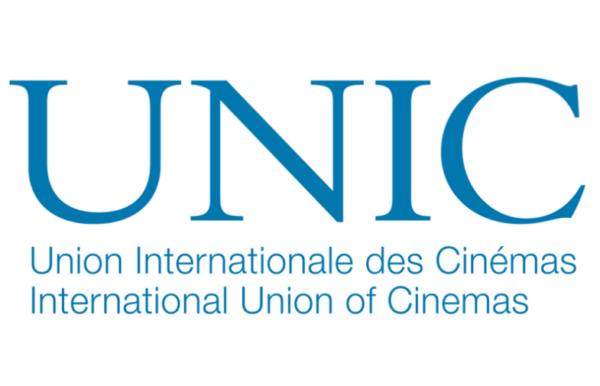Brussels, February 6, 2019: The International Union of Cinemas (UNIC), the body representing European cinema trade associations and operators, today released its provisional update on admissions and box office revenues across Europe for 2018.
While some data remains to be collated and figures for certain territories are based only on initial estimates, the overview provided by UNIC represents the first wide-ranging assessment of the performance of the European cinema sector in 2018. More detailed final data on the performance of each territory will be released in spring 2019.
European cinema-going in 2018
Across 2018, cinema-going in Europe decreased by approximately 3.3 percent following a record-breaking previous year, yet still totalled over 1.25 billion admissions and € 8 billion* at the box office for the fourth year in a row. Total admissions for EU Member States (where data was available) decreased by 2.9 percent, with close to 950 million visits to the cinema.
Despite continued investment in technology and audience development initiatives, cinema operators across the region experienced mixed performances, with a combination of different factors—including a particularly warm summer and the FIFA World Cup—contributing to a dip in attendance in several leading European territories. Box office was mainly driven by international titles, including, but not limited to, Avengers: Infinity War, Bohemian Rhapsody, The Incredibles 2, Mamma Mia! Here We Go Again and Hotel Transylvania 3: Summer Vacation.
Once final box office figures for all UNIC territories are available, total box office revenues will be shared.
Record performances in the UK, Turkey, Poland and Romania
Despite a very slight dip of 0.1 percent in box office results, UK exhibitors enjoyed a record-breaking year with over 177 million admissions, the highest level of cinema-going since 1970. Similarly, Polish cinemas attracted almost 60 million cinema-goers, a 5.5 percent year-on-year increase, bolstered by three local productions leading at the box office including Kler and Kobiety Mafii. Even more impressively, Romania almost quadrupled its cinema attendance in the last ten years, with a record 14.5 million tickets sold in 2018, as box office increased by 12.5 percent. Finally, Turkish cinemas attracted over 70 million cinema-goers for the second year in a row, with a record-breaking 62.9 percent national films’ market share led by the local production Müslüm.
Balanced results in France, Spain and Russia
While France experienced a 4.3 percent decline in attendance, French exhibitors still attracted over 200 million cinema-goers and enjoyed a record market share for national films of almost 40 percent, with three local films in the box office top five. The same trend could be observed in Spain (box office -1.9 percent / admissions -2.0 percent), finishing just shy of the symbolic 100 million admissions mark. Russia—after outperforming France in 2017 as the leading European territory in terms of cinema admissions—experienced its second-best year ever, despite a 5.7 percent decrease in admissions, as local film Dvizhenie vverkh led at the box office.
Lackluster year in German-speaking territories and Southern Europe
Germany (box office -14.8 percent / admissions -13.9 percent), Austria (box office -9.5 percent / admissions -11.4 percent) and Switzerland (box office -12.6 percent / admissions -12.9 percent) all suffered from a lack of successful local and international content. Decreases were also witnessed in Italy (box office -5.0 percent / admissions -6.9 percent), Greece (box office -7.7 percent / admissions -7.4 percent) and Portugal (box office -4.0 percent / admissions -5.9 percent).
Mixed fortunes in Scandinavia and Southern Europe
Denmark (box office +5.1 percent / admissions +4.0 percent) and Norway (box office +9.1 percent / admissions +3.0 percent) enjoyed a positive year, with several local productions making it into the box office top five, including the Danish film Journal 64. Following a record-setting 2017 and despite a 22.7 percent market share for national films, Finland suffered an 8.2 percent decline in admissions, while Swedish cinema operators experienced stable results, with box office and admissions declining by less than 1.0 percent.
Continued growth in CEE and the Balkans
With the exceptions of territories such as Slovakia (box office -4.3 percent/ admissions -10.9 percent) and Bulgaria (box office -9.2 percent / admissions -12.1 percent)—both after breaking their all-time box office records in 2017—the majority of territories in Central and Eastern Europe enjoyed another year of growth, including the Czech Republic (box office +13.2 percent / admissions +7.3 percent), Hungary (box office +4.8 percent / admissions +2.0 percent) and Lithuania (box office +9.8 percent / admissions +4.9 percent). The same upward trend was experienced in the Balkans, with positive results in Croatia (box office +7.8 percent / admissions +1.4 percent) and Serbia (box office +19.9 percent / admissions +18.0 percent).
Admissions per capita, share of European films, outlook for 2019
Admissions per capita for all UNIC territories (where data was available) remained stable at 1.5 visits per year.
France and Ireland (at 3.2 and 3.3, respectively) again experienced the highest rates of cinema-going.
Due to incomplete figures for several countries, it is too early to assess the total market share for European films in 2017. Turkey (62.9 percent), France (39.3 percent) and Poland (35.5 percent) experienced the highest national films’ market share across UNIC territories.



Share this post